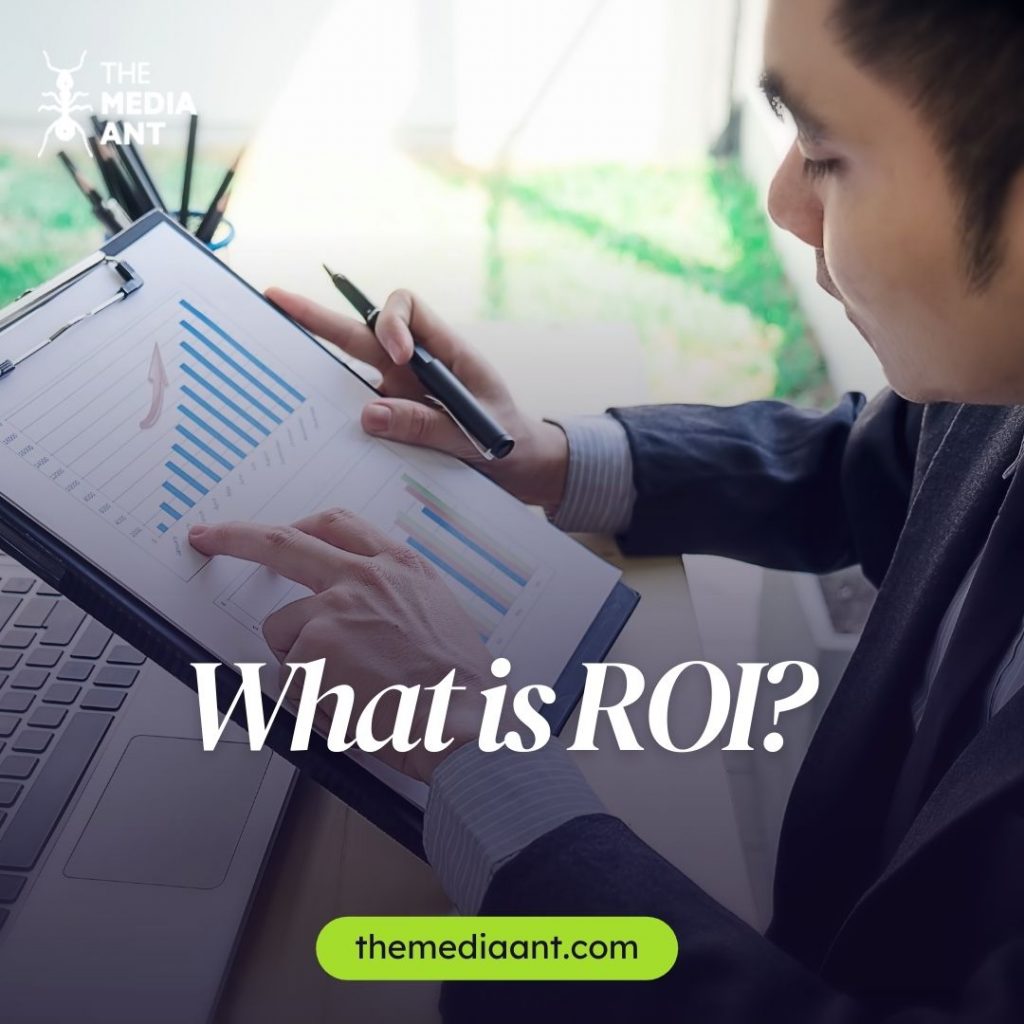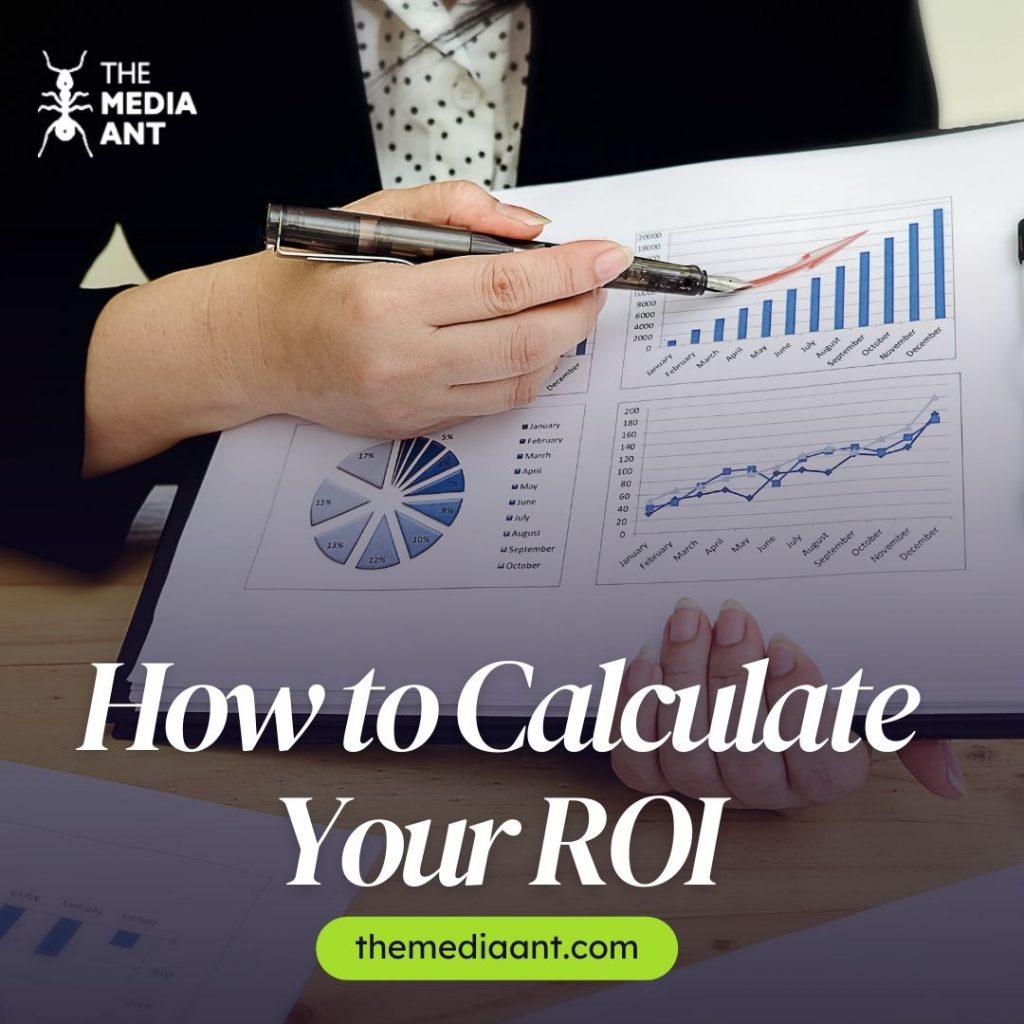Everyone loves getting their money’s worth – and the return on investment (ROI) is the perfect metric to measure that value.
This blog outlines the basics of return on investment (ROI) and its important role in business decisions.
It also describes the different types of return on investment calculation methods and the various advantages and limitations of each.
So whether you’re looking to maximize your profits or simply understand the financial value of a particular decision, this blog is for you!
What is ROI?

ROI is a calculation used to determine the success of a business decision. It can be used to measure how successful you are as an entrepreneur, and also as part of your personal finances.
There are different ways to calculate it, but the most common way is by dividing your profits by your expenses.
So, if you’re thinking of making a business investment, be sure to calculate the return on investment first! This way, you’ll know for certain whether the investment is worth pursuing.
Example of the ROI Formula Calculation
There are different ways to calculate the return on investment (ROI) of your marketing campaigns. The most common metric to measure the success of a marketing investment is the payback period.
This calculation compares the initial investment or cost of a campaign with the amount earned from its resulting sales or leads over time. Another popular way to calculate ROI is by using lifetime value (LTV).
This calculation takes into account not only how much money was spent on a particular campaign, but also how long it will continue generating income for its investors.
It helps you assess whether your investment was worth it or not and allows for better decision-making when planning future investments in marketing initiatives.
ROI formula

It’s time to take your profitability to the next level! In this ROI ultimate guide, we’ll teach you the definitive formula for calculating your return on investment.
First, you’ll need to know your costs and revenues. Once you have these figures, divide the revenue by the cost to find the percentage of profit.
Finally, multiply this percentage by the number of months or years it took for you to achieve the profits. With this information at hand, you’ll be well on your way to profitability!
Examples of ROI calculation
There’s no doubt that the return on investment (ROI) is an important metric when it comes to marketing. This metric determines the success of a marketing campaign, and it’s important to be able to calculate it accurately for different scenarios.
In this article, we’ll share some examples of how to calculate your return on investment.
Remember: your success depends on getting the most out of your investment, so do your research first! Next, always remember to calculate the return on investment of your advertising/marketing materials – this will help you decide when it’s time to reinvest.
There are many different ways to calculate your return on investment, so it’s important to find the one that works best for you and your business. So, are you ready to calculate your return on investment?
Return on investment calculator
Your return on investment (ROI) is an important metric to track and measure the success of your business. It’s also an important part of any business decision.
To calculate your return on your latest project or investment, use this calculator. It takes into account expenses and revenue, and provides you with an accurate estimation of your return.
Keep in mind that every dollar you save with a higher ROI equals more money in your pocket down the road! So, make the calculation a priority and you’ll be on your way to a successful business.
How to calculate ROI?
ROI= Current Value of Investment − Cost of Investment / Cost of Investment
When it comes to calculating your return on investment (ROI), there are a number of different ways to go about it. However, the most important thing is to make sure that you calculate it the right way for the type of business that you’re in.
For example, if you’re in the business of selling products, then you should use average cart value / customer acquisition costs or COGS divided by CACs to get an idea of how profitable your project is.
Alternatively, if you’re in the business of writing, you can use the ratio of total words / average words to get an idea of how well your content is doing. Whatever the calculation may be, always remember the higher the ROI, the more successful your project was! So, make sure to calculate it and use it as a metric to evaluate the success of your next business venture.
How does ROI Calculators work?
There’s no better way to know if your investment is paying off than by calculating your return on investment. And the best way to do that is by using a calculator.
There are many different types of calculators available, so it’s important to find the right one for you. Once you’ve found the calculator that works for you, start calculating and tracking your results.
The goal is to find the best way to allocate your investments in order to reach the highest returns possible. Doing so will help you make the most of your money and achieve your financial goals.
So go ahead, get calculator-ready and start calculating!
Limitations of Calculating ROI
ROI (return on investment) is a metric that is often used in business to measure the success of a marketing campaign. It’s a useful way to determine the return on investment of an investment, and can provide a snapshot of the campaign’s progress.
However, there are limitations to what can be measured. Additionally, calculating ROI is only one aspect of the entire marketing equation – it’s important to remember that data in context is essential for making sound decisions.
Always look at results in the context of the entire marketing strategy, and don’t over-value calculations based on isolated data. In the end, calculating ROI is a useful way to get an overall sense of the success of your marketing campaigns.
ROI Calculator Advantages
When it comes to advertising, ensuring that you achieve a good return on investment (ROI) is of the utmost importance. There are many different calculators available, so the decision of which one to use is up to you. The calculator you choose should be able to handle multiple campaigns and track results over time.
Additionally, make sure to take into account all of the benefits of advertising – such as reaching new customers, increasing brand awareness, and generating leads.
By following these tips, you’ll be able to calculate your ROI confidently and make informed decisions about where to allocate your advertising funds.
ROI Calculator Limitations
Campaigns can be incredibly costly, and it can be difficult to calculate the return on investment (ROI). That’s where the ROI calculator comes in handy. It’s designed to help you calculate the return on a specific project – whether it’s a small or large one.
However, there are a few limitations to the calculator so be sure to understand them before using it. For instance, the calculator is not designed for campaigns that cost more than $10,000. Additionally, the calculator only accounts for direct costs associated with your campaign – not indirect costs like employee time or overhead costs.
Still, the calculator is a great starting point and can help you adjust along the way based on your results. As you get better at calculating ROI, you’ll find that the calculator becomes more and more valuable!
Frequently Asked Questions
How can I improve the efficiency of my marketing campaigns?
There are a number of ways to improve the efficiency of your marketing campaigns. One of the most popular methods is through split testing. This involves testing different variants of your email campaigns to optimize and fine tune them until you reach profitability.
You can also measure other factors like open rates, click rates and conversions in order to improve overall results. However, the most important step is calculating your Return on Investment (ROI). This will help you identify the best strategies for growing your business.
How can I calculate my ROI for my marketing campaigns?
You can calculate your return on investment (ROI) for your marketing campaigns through the use of key performance indicators (KPIs). These can include things like leads generated, sales made, or website traffic.
Additionally, you should track social media engagement and measurement of reach and frequency. There are many ways to calculate your ROI, but the most important thing is to find an effective way that works for you.
Some common methods of calculating ROI include cost per acquisition (CPA), cost per sale (CPS), or cost per lead (CL). However, the most important metric of all is the return on investment (ROI), which shows how much profit you’re making from your investment relative to the initial costs involved.
Is it worth it to spend more money on higher-ROI marketing strategies?
There are a few factors that go into calculating the return on investment (ROI) of a marketing strategy. One of the most important factors is how much money you spend on the campaign.
Higher-ROI marketing strategies usually involve more intensive and time consuming efforts but are ultimately worth it. For example, if you invest in a PPC campaign that costs $10,000 and you achieve a 30% ROI, the return on investment would be $3,000.
Second, the objective of the campaign should be determined. If the objective of the campaign is to generate leads or increase website traffic, then a higher-ROI strategy may be better as it will result in better results. Lastly, did the strategy achieve its goal? If the answer is yes, then the strategy was successful and the return on investment was justified.
Is there any way to improve your results with a roi calculator?
Yes, there are many ways to improve your roi calculator results. The most common way is by tweaking the inputs or altering the calculation method. However, you can also use different tools to help you in calculating your roi more accurately – like Profit & Loss Analyzer and Google Sheets.
Use of ROI calculators in sales
When calculating the return on investment of a certain sales initiative, always keep in mind the amount of money that you are investing, the time frame for which it is supposed to be profitable, and how much value it will add to your business.
To get an accurate estimate, use calculators like the one offered by Google or Excel. Simply type in the amount of money that you are investing, the time frame for which it is supposed to be profitable, and the expected return on investment (ROI).
You’ll get a calculation that tells you exactly how much money you’re making on your investment – and it’s that easy!
What does ROI of 20% mean?
ROI, or Return on Investment, is a metric used to measure the profitability of an investment. It refers to the percentage of profits gained from an investment over a certain period of time.
Next, subtract any expenses incurred during or after your project such as marketing campaigns or lost revenue caused by bad timing. This will give you a net return.
To calculate your own return on investment, you will need to account for all costs associated with your project – including financial and time investments. This calculation will provide you with an accurate idea of the profitability of your project.
What does 30% ROI mean?
Your return of investment, or ROI, is the percentage of profits you earned from an investment relative to your initial investment. In other words, if you invested $1,000 in a company and the company’s share price went up by 30%, your ROI would be 300%. This means that you generated 300% more value than what you put in (i.e., the stock price increased by 30%).
How do you find 12% return on investment?
To find your 12% return on investment, you first need to determine the amount of money that you are putting into your project. Next, multiply this number by 100 to get the percentage – in other words, it will represent how many percent returns you are expecting on your investment.
Next, divide this figure by the total amount of money you expect to earn from your project – this is how much each dollar will contribute. Finally, add the percentages together to get your final return on investment figure of 12%.
Is a 10% ROI good?
Yes, a 10% return on investment is usually good news. Anything over that rate of return indicates that you’re making more money than you’re spending and the business is likely doing well. In this case, you may want to consider ways to increase profitability or scale up the operation.
Is ROI of 5% good?
Yes, the return on investment of 5% is good. NPV is a calculation that many different investors use to determine the success of their businesses. NPV typically takes the cash flow from operations (i.e. profits) and subtracts any expenses incurred (such as initial costs).
The remaining amount is then divided by the initial capital investment. This calculation can help you make better decisions about how to allocate your resources and budget, as well as measure the progress of your business over time.
How do you calculate ROI ratio?
To calculate the return on investment (ROI), you need to take a look at how much money you’ve made from your investments in comparison to the amount of money you’ve spent on them. The formula used to calculate the return on investment is: Annual income – expenditures / equity in value of investments.
What is return investment ratio?
According to the formula for calculating return investment ratio, the return on investment (ROI) is calculated as [(Earnings – Initial Investment) / Initial Investment] x 100%. This tells you how much money the investment has generated relative to the initial cost of the investment. In other words, the higher the ROI, the better.
This means that if you invest $1,000 in a company, and the company generates $2,000 in earnings over the period of a year, the return on investment would be 20%. This means that you would have earned $1,200 in value from your initial investment.
Now that you know the basics of return investment ratio, you can use it to calculate a company’s profitability and make better investment decisions in the future.
Conclusion
Now that you know the basics of calculating your return on investment, it’s time to put it all together and get the most out of your investment. By knowing the different formula and calculation methods available, you can easily calculate your return on investment.
Plus, the return on investment calculator allows you to compare different investments and make the right decision for your business.
Make sure to check back for more helpful tips on how to calculate your return on investment.

